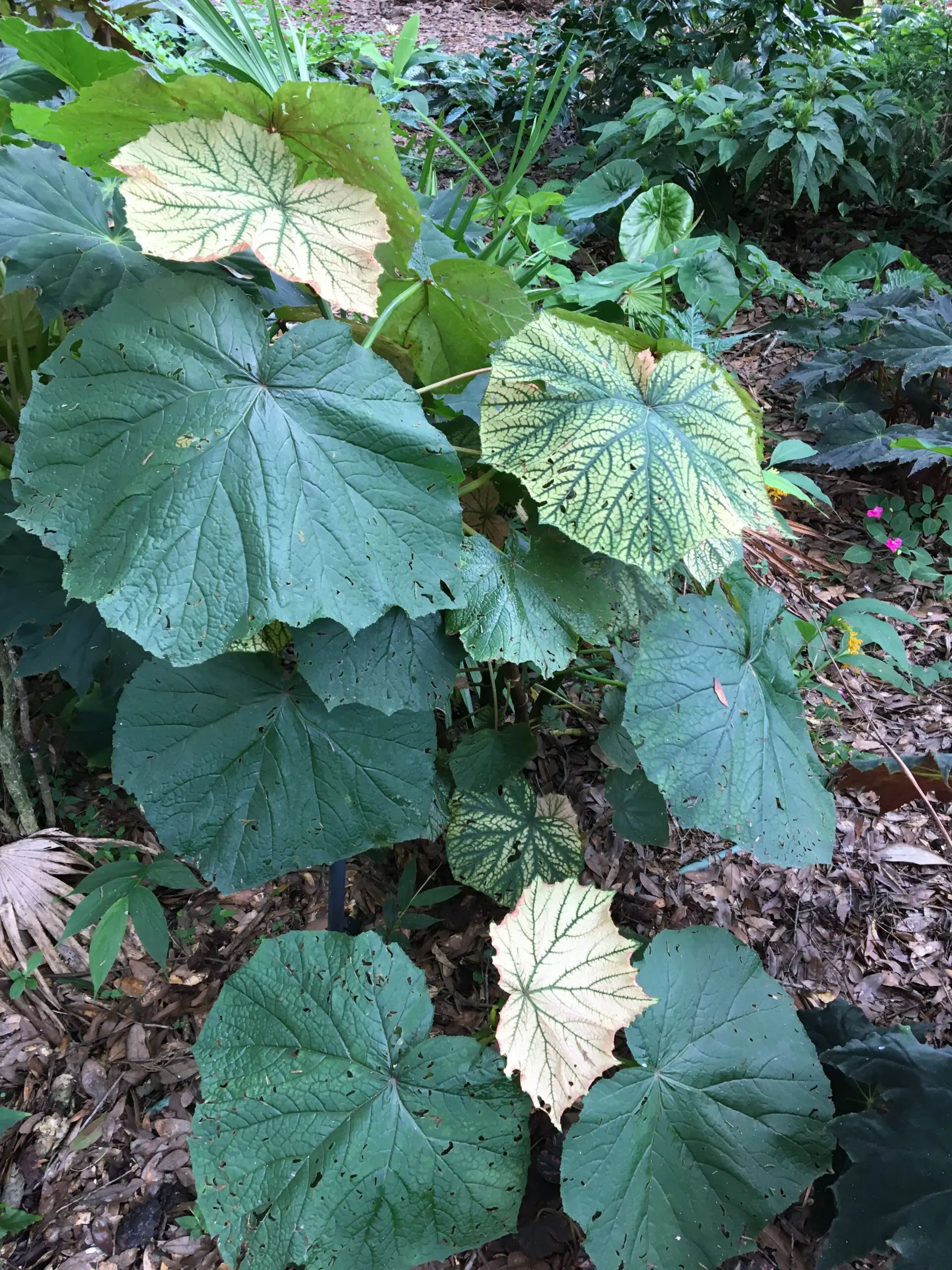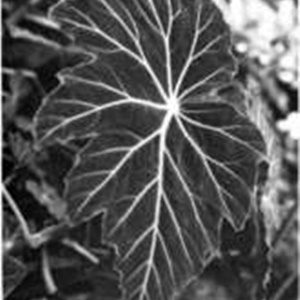Possibly the least recognized yet most challenging begonias are those in the thick-stemmed group. They are marked by thick, almost tree-like stems and many grow very tall — some as high as a house. Few are considered decorative, but they can be striking, majestic, and interesting.
This is a group with relatively few member plants, although one of the first begonias ever found, B. malabarica (1650 or before), is thick-stemmed. The majority don’t make good indoor plants because they need lots of room to grow. Those in the thickset classification grow low, however, and make suitable indoor subjects.
Some thick-stemmed begonias are B. ‘Bangles’, B. ‘Bessie Buxton’, B. dichotoma, B. egregia, B. fiburgensis, B. involucrata, B. johnstonii, B. ludwigii, B. ‘Marie Reed’, B. parilis, B. ‘Paul Bruant’, B. ‘Perle de Lorraine’, B. ‘Phyllomaniaca’ (syn. B.’Jessie’), B. rigida, B. ‘Rudy’, B. sulcata, B.‘Tamo’, B. ‘Templinii’, B. ulmilolia, B. valida, and B. vitifolia.
The thick-stemmed begonias rarely branch — instead, they produce new stems from the base to replace old, woody, spent ones. With a few exceptions, they are seasonal bloomers if they bloom at all. Some bloom very sparsely, even in good cultural conditions. Leaves can be bare or hairy, depending on the plant.
These begonias require lots of sun to grow large and as full as possible, although intense sun in hot areas is to be avoided. Their temperature requirements are flexible. Almost any range comfortable to humans will do. In temperatures near freezing, however, many kinds will go dormant, dropping leaves and suspending growth. Thick-stemmed begonias need no special high-humidity conditions — a range of 40 to 50 percent is sufficient.
Deep, heavy pots are needed for thick-stemmed begonias, because they develop large root systems. A heavy container will counterbalance the weight of the tall growth. One exception is the low-growing thickset section of this group, which requires squat pots.
General begonia watering rules prevail — water thoroughly, then water again only when the soil surface is dry to the touch.
Because of their tendency to grow tall without branching, it often is difficult to train thick-stemmed begonias into compact, pleasing forms. Stake a stem that is going askew or that is drooping when it is supposed to grow erect. Pruning consists primarily of removing old, bare stems to make room for new, green, vigorous ones as they appear. Pinching new stems is the way to force side growth and control plant height.
Thick-stemmed plants can be kept in optimum condition with slightly more fertilizer — use a balanced, complete formula such as 18-18-18 — than other begonias require. Always follow label directions. Few insects or diseases attack these begonias, but if you have such a problem, always diagnose carefully and use the least toxic chemical control that works, unless you practice a preventive chemical program. Read and follow the label exactly.
Stem and tip cuttings are good ways to propagate.





